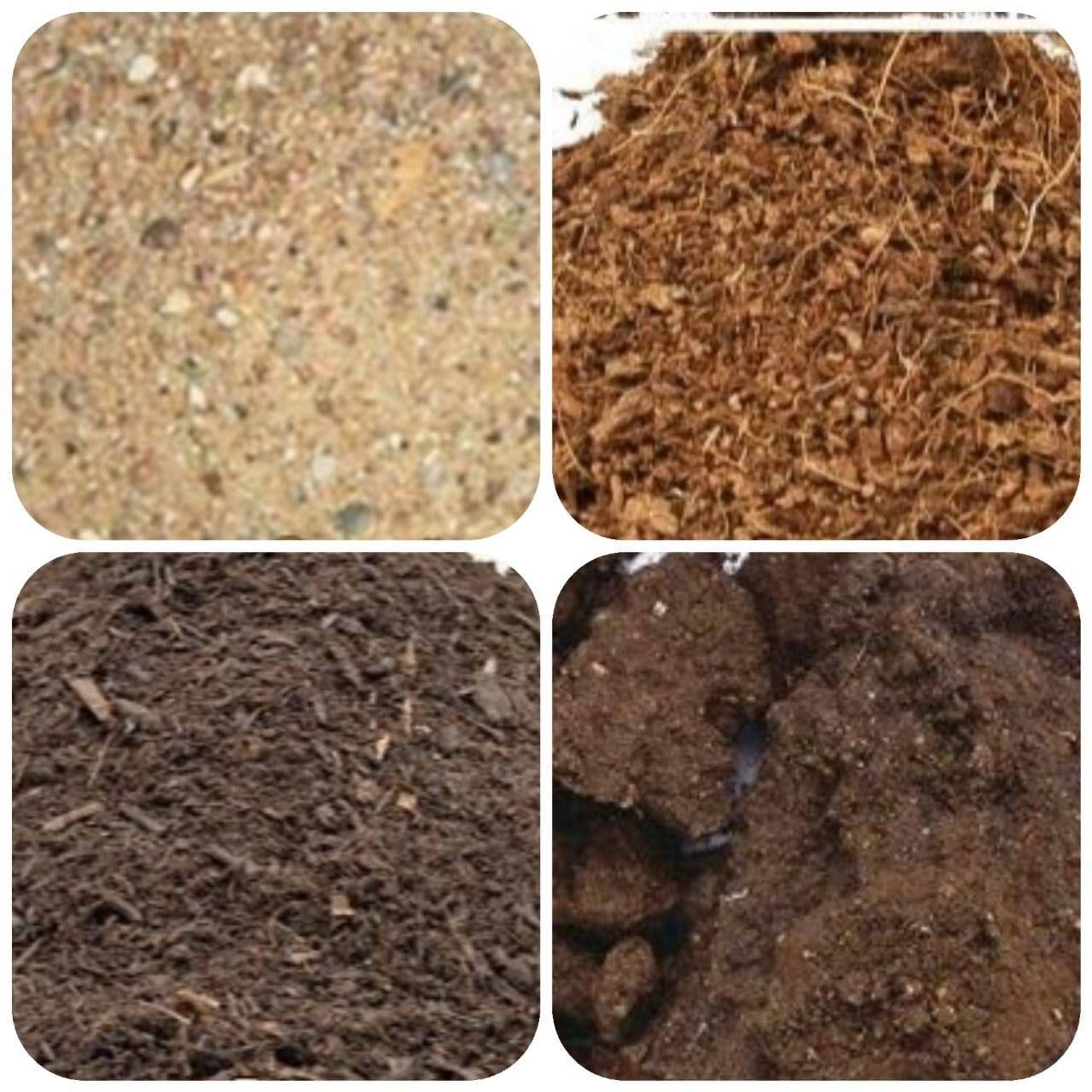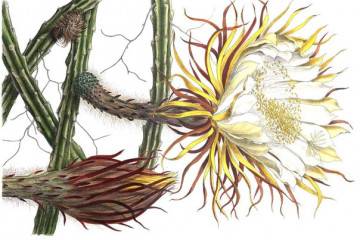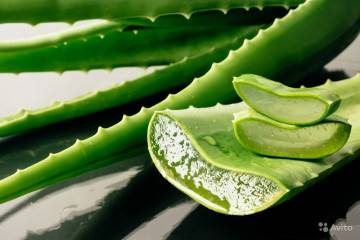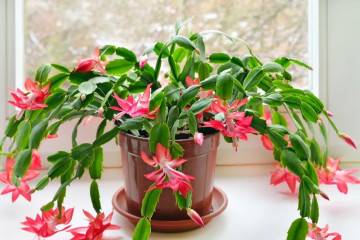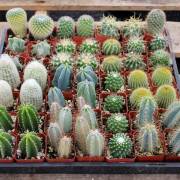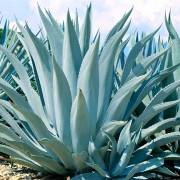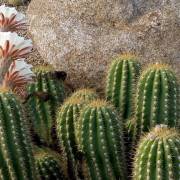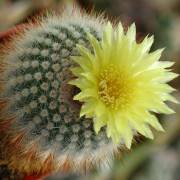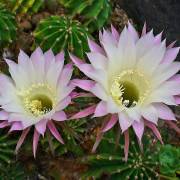Soil for cacti: basic soil requirements and options at home
Content:
The cactus is an amazing plant. Many flower growers are happy to replenish their collection with at least a couple of varieties of this culture, because such an exotic representative of the desert always brings variety to a number of familiar indoor plants. The most popular types of cactus include mammillaria, parodies, melocactus, rebutia, prickly pear and, of course, echinocactus. And one of the most frequently asked questions is: what kind of land is suitable for cacti?
Basic requirements for soil for cacti
Representatives of the Cactus family are succulents, which include a variety of life forms: trees, shrubs, epiphytes, geophytes, and even lianas. The number of their species is impressive, as well as the ability to adapt to the most unbearable conditions. But this does not mean at all that such conditions should be created.
These flowers need care, despite the fact that they are unpretentious. And one of the most important things is a suitable substrate for cacti. You cannot plant cacti in the soil for other indoor plants, because it has a completely different composition (the exception is the soil for some spicy herbs: rosemary, lavender, laurel, thyme, etc.).
In other words, the soil for cacti is a special environment in which the flower will feel normal. And the requirements for it vary depending on the characteristics of the plant species, as well as its age.
There are two main groups of cacti: forest and desert. Desert species, mainly with a turnip or tuberous root system, with the help of which they retain moisture for a long period of time, prefer to grow in clay-sod soil without additional fertilizers. But the land for forest cactus species, which have a fibrous root system, should absorb moisture well, be loose, breathable, with the addition of sand or brick chips.
Otherwise, the roots of the plant die off, or the cactus itself can get sick with chlorosis. Too acidic soil stimulates the accumulation of manganese and aluminum, which impede the access of calcium, phosphorus, magnesium and potassium to the roots, and high acidity leads to the death of the necessary bacteria. But due to the very low pH level, the plant will suffer from poisons and heavy metals.
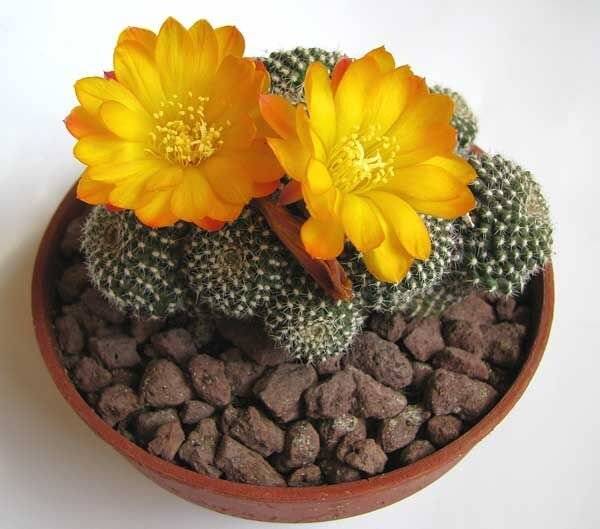
This is what a healthy blooming cactus looks like when planted in soil that matches its characteristics.
Required soil composition
As mentioned earlier, the composition of the land for cacti depends on the type and age of the succulent. Younger cacti need a more porous and nutritious environment. Therefore, a lot of deciduous soil should be present in the soil mixture for them. And old cacti can be safely planted in clay turf soil with a dense or lumpy texture. Basically, the ingredients are the same, only in different quantities, and some are added as needed.
So what kind of land is needed for the proper development of a cactus? Here is a detailed list of the required substances and their short characteristics:
- leafy soil: nutritious, light, loose, with a slightly acidic reaction. It is air and moisture permeable, suitable for plants with thin, young roots;
- sod land contains a large amount of useful trace elements and minerals. She has an average moisture permeability. For cactus, light-sod soil is more suitable, which consists of almost half of clay particles;
- peat has a rich chemical composition, which is valuable for growing any kind of plant. The acidity of peat depends on the amount of calcium in it: the more calcium, the less acidity. However, peat does not absorb moisture well, so there should not be much of it. Unlike most houseplants, cacti prefer the soil with high peat, and not with lowland or transitional. There are not so many fertilizers in it, which in excessive quantities will only harm the succulent, therefore the color of such soil is light brown;
- river sand provides the soil with a porous, loose structure. It is vital for cactus, because the natural environment of many species of these plants is the driest places on Earth - deserts;
- humus is an additional portion of useful elements. It is very important to know that humus with a high percentage of nitrogen should not be added to the soil for cacti. This element stimulates rapid growth, and many cacti naturally grow slowly, and if this process is artificially accelerated, then the plant will have cracks on the skin. In most cases, such feeding is necessary for large forest cacti;
- fired clay (or zeolite granules) also serves for soil porosity. Thanks to her, water is better absorbed;
- charcoal powder is an excellent substance for disinfecting the root system. It is added to pots when transplanting plants if the roots begin to rot due to excess moisture.
It is these ingredients that the earth should contain for cacti in order to create favorable conditions for their existence.
Features of making soil at home
It is not necessary to look for the ideal ground mixture in specialized flower shops. This does not happen. Of course, manufacturers are trying to isolate the golden mean, but all flowers are living beings. They are influenced in different ways by certain conditions. They perceive the environment differently.
To create the desired soil mixture, it is necessary to take into account all the individual requirements and characteristics of a particular plant species: its root system, previous habitat, age.
If the cactus has a fibrous root system or is still young, then the mixture is prepared in the following proportions:
- 1-2 parts of leafy land;
- 1 part of sod land;
- 1 part sand or zeolite granules;
- 1 teaspoon of broken red brick or pebbles for 1 glass of soil;
- 1 teaspoon of charcoal powder in 1 cup of soil.
If the cactus has powerful turnip roots, or the plant is more than 3-4 years old, then the mixture looks like this:
- 1 piece of leafy land;
- 2 parts of soddy clay soil;
- 1 part river sand or zeolite granules;
- 1 part of broken red brick or perlite.
Cactus transplant options
Sooner or later the moment comes when the plant needs to be transplanted. There are a number of reasons for this:
- the cactus was bought in a flower shop, where it was in technical soil, not suitable for long-term cultivation;
- the roots do not fit in the pot and become visible from the drainage holes;
- the aerial part of the cactus protrudes too much beyond the edges of the pot;
- disease of the roots of the plant.
In the first three cases, everything is quite simple to do. It should be remembered in which land you can plant cacti. You need to prepare inventory: pots, thick gloves, tweezers, a well-sharpened knife, sulfur in powder or coal.
Do not water cacti 3-4 days before transplanting. This is required to easily remove soil from the roots.
After knocking on the walls of the pot, you need to pull out the flower with tweezers by the root collar. Then you need to carefully examine the roots. If suddenly there are rotten and sick ones among them, they must be carefully cut off and treated with sulfur or charcoal. Next, you can transplant the cactus into a new pot with lots of drainage holes.
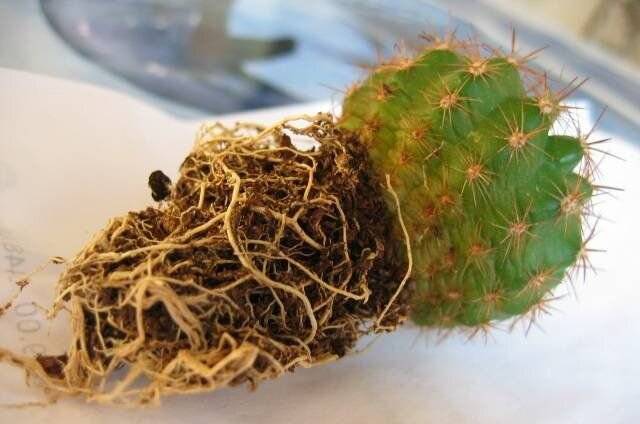
Over time, the roots of the cactus fill the entire free space of the pot, so the plant needs regular replanting.
Cactus soil can be homemade or store-bought. You should not plant the cactus deeply, part of the root collar should be visible.
Psychologists believe that cacti are bred by cold-blooded and reserved people, who in fact are very impressionable. The same can be said for these plants. Although they look like thorny hedgehogs, they still require proper care and attention.

